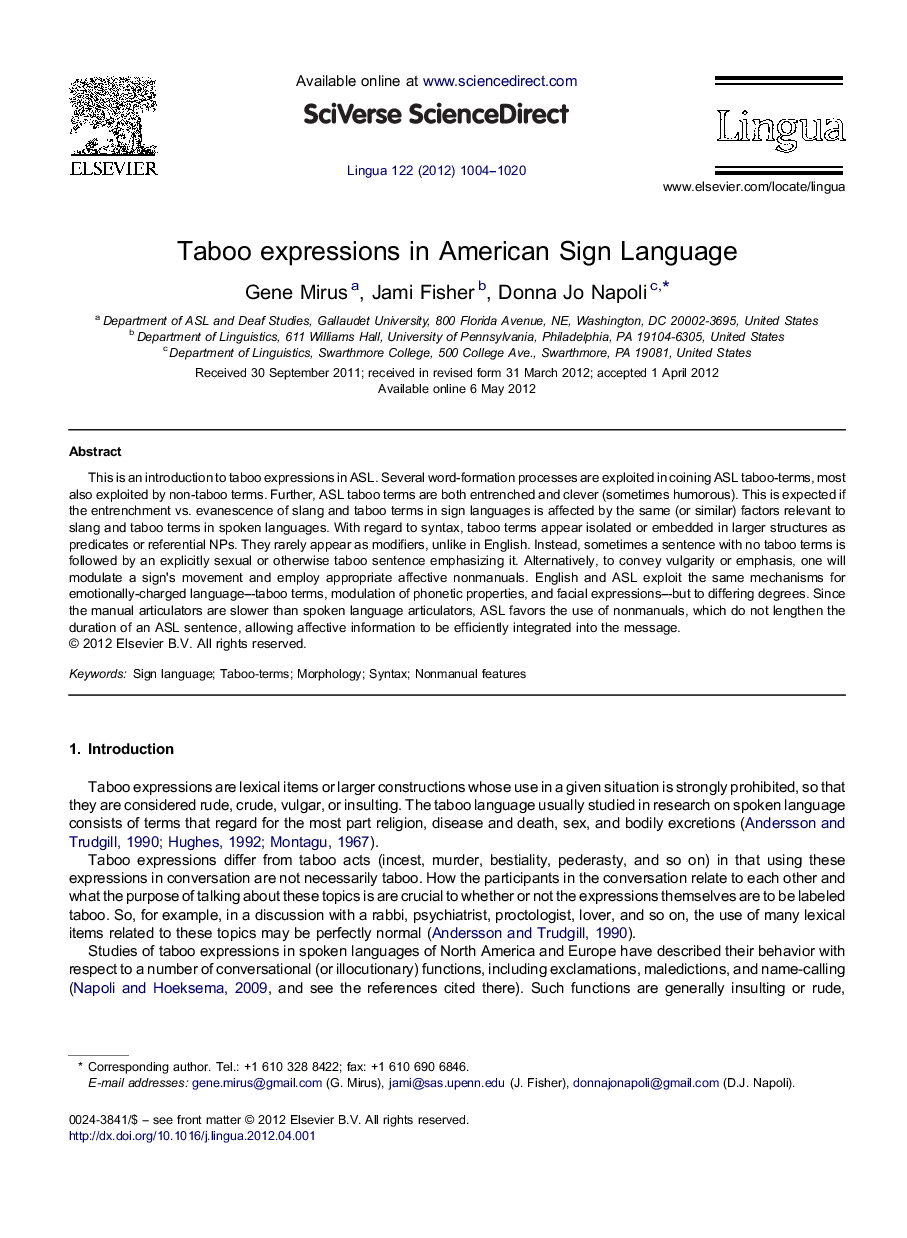| Article ID | Journal | Published Year | Pages | File Type |
|---|---|---|---|---|
| 935780 | Lingua | 2012 | 17 Pages |
This is an introduction to taboo expressions in ASL. Several word-formation processes are exploited in coining ASL taboo-terms, most also exploited by non-taboo terms. Further, ASL taboo terms are both entrenched and clever (sometimes humorous). This is expected if the entrenchment vs. evanescence of slang and taboo terms in sign languages is affected by the same (or similar) factors relevant to slang and taboo terms in spoken languages. With regard to syntax, taboo terms appear isolated or embedded in larger structures as predicates or referential NPs. They rarely appear as modifiers, unlike in English. Instead, sometimes a sentence with no taboo terms is followed by an explicitly sexual or otherwise taboo sentence emphasizing it. Alternatively, to convey vulgarity or emphasis, one will modulate a sign's movement and employ appropriate affective nonmanuals. English and ASL exploit the same mechanisms for emotionally-charged language—taboo terms, modulation of phonetic properties, and facial expressions—but to differing degrees. Since the manual articulators are slower than spoken language articulators, ASL favors the use of nonmanuals, which do not lengthen the duration of an ASL sentence, allowing affective information to be efficiently integrated into the message.
